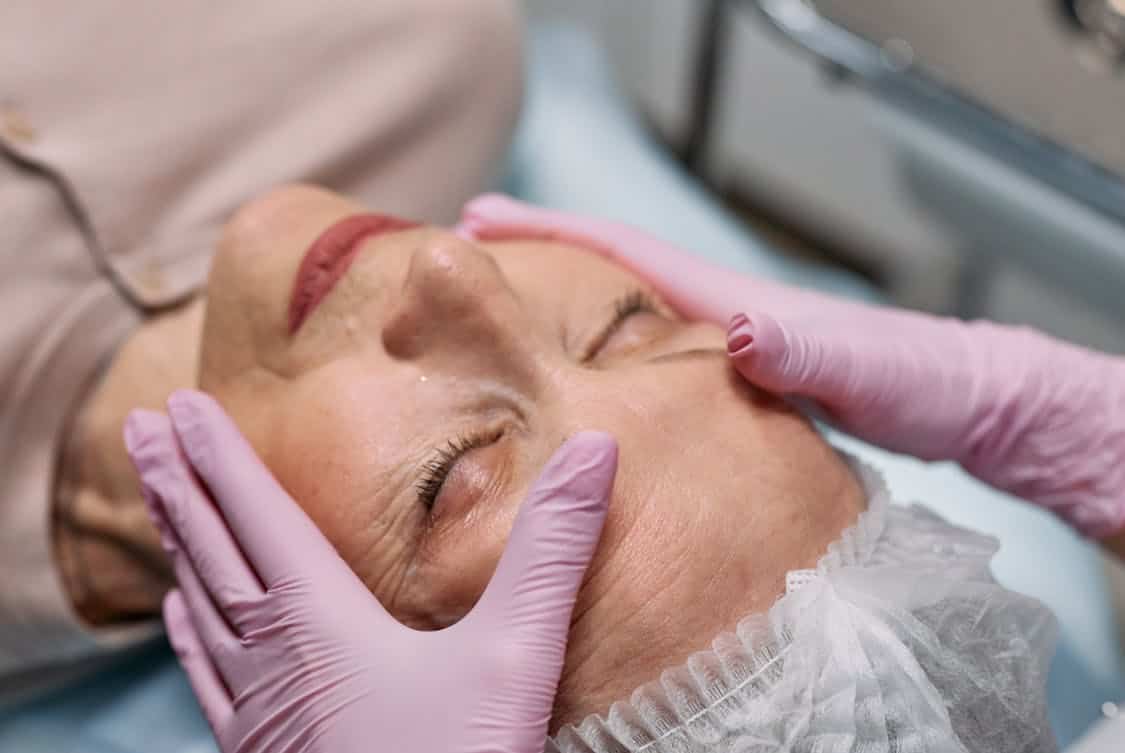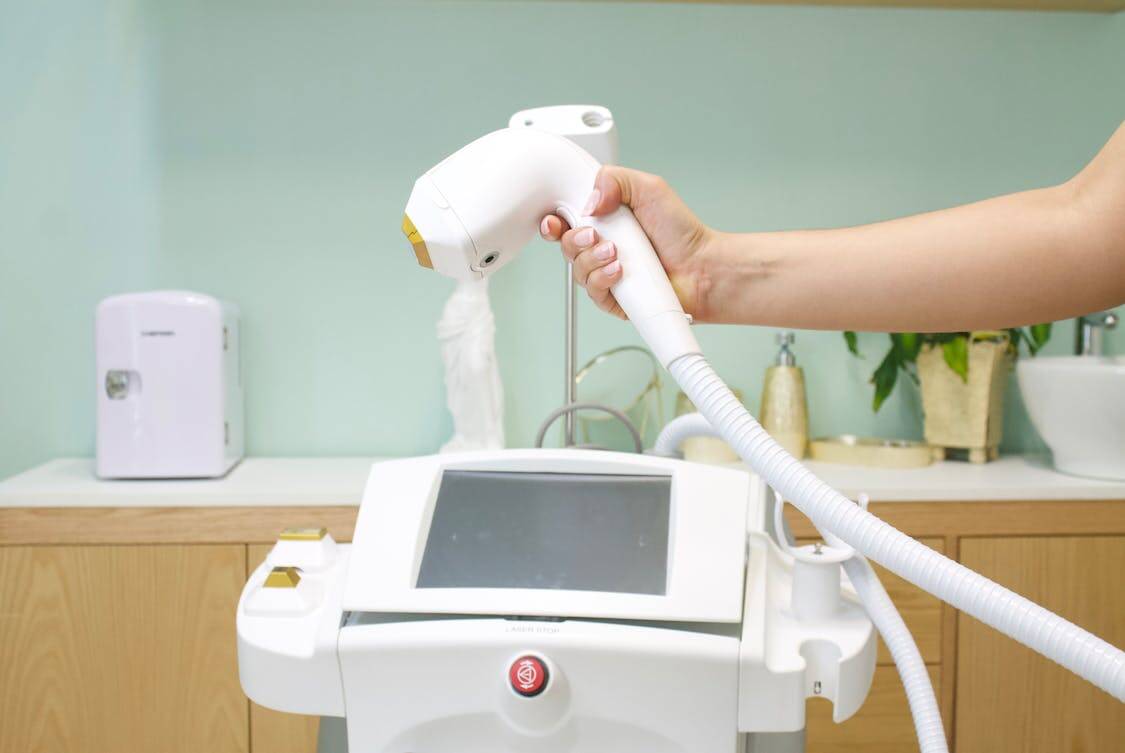Navigating the world of laser treatments can feel overwhelming, especially with the countless options available.
Each type of laser serves a unique purpose, and the effectiveness of a treatment often hinges on your specific skin type. Understanding your own skin needs is key to making an informed choice.
Understanding Different Skin Types
The journey to selecting the right laser treatment starts with understanding your skin type. Skin can generally be categorized into four types: normal, oily, dry, and combination.
Each type has its own characteristics and may respond differently to laser technology. When choosing a treatment, it’s important to understand how using laser technologies can target specific skin concerns based on your skin type.
- Normal Skin is balanced, not too oily or dry, making it relatively resilient to various treatments. Most laser therapies work well with this skin type, offering a broad range of options.
- Oily Skin tends to produce excess sebum, which can lead to acne and enlarged pores. Treatments aimed at reducing oil production or addressing acne scars are particularly effective here.
- Dry Skin can be sensitive and may react poorly to certain lasers. Gentle treatments focusing on hydration and rejuvenation are typically recommended for those with dry skin to prevent irritation.
- Combination Skin features both oily and dry areas, requiring a tailored approach. A professional consultation can help determine which areas need specific treatments.
Identifying Your Skin Concerns
Once you know your skin type, it’s time to identify specific concerns. Common issues include acne scars, pigmentation, wrinkles, and uneven texture. Each of these may benefit from different laser treatments.
Acne Scars
For those battling acne scars, fractional lasers can work wonders. These lasers create tiny wounds in the skin, encouraging the body to remodel collagen and improve skin texture over time.
Both ablative and non-ablative lasers are available, with non-ablative being less aggressive and often a better fit for sensitive skin types.
Pigmentation Issues
If pigmentation or sun damage is your main concern, consider Q-switched lasers. They target dark spots and can result in a more even skin tone.
These lasers are especially effective on lighter skin tones and may require multiple sessions to achieve the desired results.
Wrinkles and Fine Lines

For wrinkle treatment, options like CO2 lasers or erbium lasers can be considered. These work by removing the outer layers of skin, prompting regeneration and tightening.
However, they may not be suitable for every skin type, particularly those with a darker complexion, as they can increase the risk of hyperpigmentation.
Uneven Texture
When it comes to uneven skin texture, combination therapies often yield the best results. This might include using microneedling alongside laser treatments to enhance overall skin smoothness.
A consultation will help you understand which combination is right for you.
Different Types of Laser Treatments
Familiarizing yourself with the types of lasers available will further aid your decision-making process. Here are some common options:
- Ablative Lasers: These remove the outer layer of skin, promoting regeneration. Useful for deeper wrinkles and scars, but with longer recovery times.
- Non-Ablative Lasers: These simply heat the underlying skin, stimulating collagen production without damaging the surface. Great for mild wrinkles and overall skin rejuvenation.
- Fractional Lasers: A hybrid of the two above, fractional lasers target specific areas of the skin. They are less aggressive than ablative lasers and suitable for various skin types.
- Intense Pulsed Light (IPL): Not a laser per se, IPL uses a range of wavelengths to target pigmentation and redness. It’s gentler and can be a great option for sensitive skin.
Consulting a Professional
After pinpointing your skin type and concerns, consulting a qualified professional is the next step. A dermatologist or licensed technician will assess your skin’s unique characteristics and recommend suitable treatments.
What to Expect in a Consultation
During your consultation, the professional will likely review your medical history, discuss your goals, and conduct a skin analysis. They may suggest tests, such as patch tests, to see how your skin reacts before committing to a full treatment.
Questions to Ask
It’s crucial to come prepared with questions. Inquire about the recommended type of laser for your skin type, expected results, and potential risks.
Understanding the post-treatment care is equally important; some lasers may require significant downtime while others allow you to resume your daily activities quickly.
Evaluating Risks and Benefits
Every treatment comes with its own set of risks and benefits. It’s essential to weigh these carefully in relation to your skin type and desired outcomes.
Risks to Consider
Potential side effects might include redness, swelling, or even scarring, especially with more aggressive treatments. Those with darker skin tones need to exercise caution, as certain lasers could heighten the risk of hyperpigmentation.
Benefits to Look Forward To
On the flip side, the benefits can be substantial. Effective laser treatments can lead to smoother skin, improved texture, and a more youthful appearance. For many, the self-esteem boost that comes from clearer skin is priceless.
Aftercare: The Key to Success
Post-treatment care is vital for achieving the best results. Depending on the type of laser used, your skin may require different levels of care.
General Aftercare Guidelines
- Moisturize: Keeping the skin hydrated is essential. Use gentle, non-irritating moisturizers.
- Sun Protection: Sunscreen becomes your best friend post-treatment. Laser-treated skin is more sensitive to UV rays, increasing the risk of pigmentation.
- Avoid Harsh Products: Steer clear of retinoids, exfoliants, and other harsh products until your skin has healed.
Specific Care for Different Treatments
If you undergo more invasive treatments, be prepared for longer recovery times. Follow your professional’s specific aftercare instructions closely to minimize complications and ensure optimal healing.
Cost Considerations
Laser treatments can vary significantly in price. Factors influencing cost include the type of laser used, the area being treated, and the number of sessions required.
Budgeting for Treatments
When budgeting, remember to factor in possible follow-up sessions, as many treatments require multiple applications for optimal results. Check if your practitioner offers payment plans, as this can help ease the financial burden.
Insurance and Payment Options
While many cosmetic treatments are not covered by insurance, some medical-grade lasers may be eligible. It’s always worth checking with your insurance provider and discussing payment options with your chosen clinic.
Staying Informed
With the rapid advancements in laser technology, staying informed about new treatments and techniques is beneficial. Researching and asking questions will empower you to make the best choice for your skin.
Keeping Up with Trends
Join online forums or follow skincare professionals on social media to learn about emerging trends and treatments. Engaging with a community can also provide insights into real-world experiences with various laser therapies.












